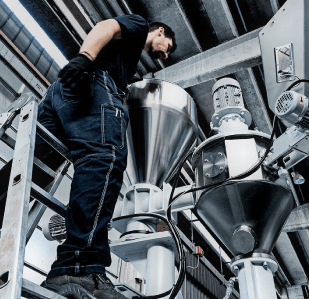-
COMPLETE LINES
-
EXTRUDERS
Laboratory Extruder MD 30
MD 30 extruder allows to carry out tests, samples and experiments on small quantities
-
DOWNSTREAM
-
INDUSTRIES
-
KNOW HOW
-
SERVICE
Technical support
Technical assistance for our Extrusion Line with well-trained technicians with hands-on support as well remote assistance.
Spare PartsBausano well-stocked warehouse where you can find accessories and original spare parts, even for Bausano machines over 20 years old
Testing & TrainingTesting services like Factory acceptance tests, virtual FAT or SAT are offered with all our Extrusion Lines
- REQUEST A QUOTE







